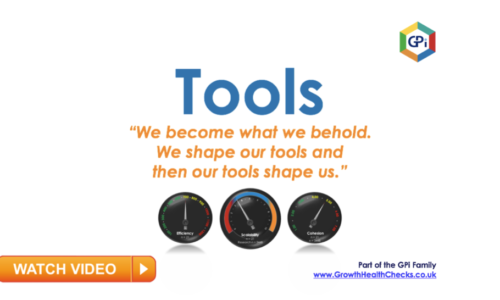Tools
Tools
Firstly, the Cohesion Index, which is all about how well-oiled your company is. We uncover mis-alignments and performance barriers within your business to create an organisational blueprint.
Secondly, the Efficiency Index, which shows if all your people sing from the same hymn sheet. We engage everyone as much as necessary, identify friction losses and provide a (people) operating system.
Lastly, the Scalability Index measures your organisation’s readiness to move to the next performance level.
The Right Tools
We like to think that we either have the tools available to help you progress, or that we can define the solution or tool needed and help you make the right choices. Also, before you invest in new systems or similar, we can sense check with you if the organisation is at the right stage for ROI. We have saved clients a lot of money over the years.
Our Five Tools to Grow Your Businesss
Tool#1: Designing Your Value Proposition
Put the value proposition and business model to work to create a shared language of value creation in your organization.”
The Value Proposition Design process enables you and your team to analyze and organize customer information to reveal what your clientele needs. This focuses the team’s efforts so that you don’t get sidetracked designing features or technologies that miss the mark and allows you to test your ideas continuously instead of watching them fail at the final launch.
The Value Proposition Canvas (VPC) comes from the book Value Proposition Design which is about facilitating, creating, testing and delivering products and services that people want, will buy and enjoy.
When designing a value proposition you prioritize the customer’s viewpoint.The Value Proposition Canvas works with the Business Model Canvas to support your product design efforts.
Tool#2: Constructing a Business Model
A business model can best be described through nine basic building blocks that show the logic of how a company intends to make money.”
The Business Model Canvas is a flexible template for capturing the nine essential parts of a business model. The “canvas” is usually a large piece of paper with sections for each of a model’s elements. Participants in the design process move handwritten Post-it notes, representing proposed components of the model, around the canvas; each note conveys an idea’s individual impact on the whole picture. A business model is a dynamic system, not a collection of independent parts, so a change to one element is likely to have an impact on one or more of the others. Alteration of any of the aspects of a model-in-development is easy because of this visual, “building block” style of paper-based strategizing.
This purposely simple approach maximizes broader strategic thinking while minimising debate about operational details. The use of Post-it notes with short bits of text is an effective way to build each of the primary elements of a business plan in a systematic way. The Business Model Canvas technique encourages you to think about your whole organisation, rather than as discrete, disconnected operating activities and administrative functions.
Tool#3: Leadership Tool, 3-Factor Motivation Checklist
60% of people leave their job because of their boss! The principles of effective motivation were also spelled out in the 1960s by Frederick Herzberg in his well known research, the Motivator Hygiene Theory. His findings revealed that certain characteristics of a job are consistently related to job satisfaction, while other factors are associated with job dissatisfaction. The conclusion he drew is that job satisfaction and job dissatisfaction are not opposites. Meeting the hygiene factors will not in and of itself create satisfaction. Providing the factors for job satisfaction will not eliminate job dissatisfaction. Herzberg found that mainly systems-related incentives such as increased salaries and larger offices do not necessarily make people work harder or smarter. Even when they do, the positive effects are short-lived. The hygiene factors “have an escalating zero point”, which means that material goods are quickly taken for granted and the former add-on becomes the norm. We are big fans of Dan Pink who built on this work. You will see some of the drivers labelled according to his 3 main motivational drivers: Purpose, Mastery, Autonomy. If you are interested, please watch the RSA animation or this TED Talk. Often it is just about taking the time to focus. This tool download comes in an editable version which helps in making it your own. Also, a great starting point to get your managers involved in engaging more with their direct reports.
Tool#4: Leadership Tool: Employee Engagement Checklist
Right People in the Right Places?
Keeping the best people starts with finding the right ones
It is clear that people will only stay in a job in which they feel good, that is, competent, comfortable and committed. This means that one of the first things we need to do before we consider addressing development or retention is to ensure we have the right people in the right jobs. Without this, development becomes unfocused and often pointless, and retention becomes exponentially more difficult and costly, if possible at all.
Being aware of the warning signs or symptoms that indicate a person may be in the wrong job can allow you to take action and will help avoid much greater trouble down the line.
Often it is just about taking the time to focus. The tool to download comes in an editable version which helps in making it your own. Also, a great starting point to get your managers involved in engaging more with their direct reports.
Tool#5: Scaling Your Sales Team
It is a true challenge to scale your sales team. This practical article gives you a good starting point. It points out what is necessary, how to group your salespeople and what to do with them. It is never easy but then again no one ever said scaling sales was.






